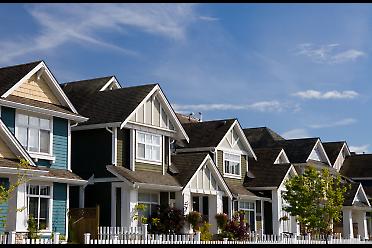The housing revival is under way, but will need sustained job growth to continue concludes “The State of the Nation’s Housing” report from Harvard’s Joint Center for Housing Studies.
“What the housing sector needs is a sustained increase in jobs to bring household growth back to its long-term pace and spur demand,” says Chris Herbert, Director of Research at the Joint Center for Housing Studies, who noted that household formations have fallen “well below expected long-run rates” due to the inability of young adults to move out on their own.
In 2011, fewer than 700,000 households were added — well below the 1.2 million or more annual trend expected under normal conditions.
Eric S. Belsky, managing director of the Joint Center for Housing Studies, said that surveys consistently find that the vast majority of young adults do plan to purchase a home in the future, but are waiting for the job market to improve.
“But as markets tighten, these fence-sitters may begin to take advantage of today’s lower home prices and unusually low mortgage rates,” Belsky said. “With rents up, home prices sharply down, and mortgage interest rates at record lows, monthly mortgage costs relative to monthly rents haven’t been this favorable since the early 1970s.”
And while the incursion of more than 4.4 million renters since 2005 has been largely made up of those that typically rent — young people, minorities and lower income households — the poor economy has increase the number of white, married and middle-class renters.
The report also indicates that the rental market will get “another significant lift” when the echo boom generation moves out on their own, something that many in the generation have delayed due to the economy.
Eventually, says the report, the echo boomer generation will move into homes, and may have even bigger of an impact than their parents did. Because the echo boomer generation is so diverse, the Joint Center projects that minorities will account for more than 70% of net household growth in 2010 to 2020.
And while the younger generation might currently be renting at record highs, homeownership rates for households with heads aged 65 and older are growing and are now near record highs as well.
The national homeownership rate, however, dipped to 66.1%, down 0.7% from a year earlier and 2.9% from the 2004 peak. Despite the drop in rates for all groups under age 65, the overall rate still stands well above the 64% prevailing in the 1980s and first half of the 1990s, largely because of the numbers for those 65 and older.
Belsky said a floor is now “beginning to form” under home prices, which should allow the market to pick up and allow single-family construction to pick back up over the course of this year “unless the broader economy goes into a tailspin.”
According to the report, residential fixed investment negatively affected growth in gross domestic product in all but three quarters — two of which benefited from targeted tax credits. Since the start of last year, however, home construction and improvement spending have added positive contribution to GDP in four out of five quarters.
Sales of new homes are also picking up compared to last year, when they hit a record low of 306,000. In the first quarter of 2012, sales stood 16.7% above year-earlier levels. The report indicates that new home sales appear to be staging a recovery that — for the first time in the cycle — does not depend on the temporary stimulus of federal homebuyer tax credits.
New homes are now also selling more quickly. The typical new home for sale in March 2012 was on the market for 8 months, compared with 8.7 months in March 2011 and 14.4 months in March 2010.
Single-family starts also picked up significantly in the second half of 2011, standing 16.6% above year-earlier levels. Multifamily starts were up significantly, surging 54% over last year.
“With multifamily construction already on the rise, even modest increases in the number of single-family starts — together with stronger sales of existing homes and associated investment in improvements — will bolster economic growth and, in turn, the housing sector,” the report said.
A backlog of about 2 million homes in foreclosure will also keep distressed sales up, says the report, and could keep price increases from occurring in places hit with many foreclosures. Growth may also be stunted due to more than 11 million underwater homeowners who owe more on their properties than what their houses are worth.
These problems, added to the inability of many homeowners to refinance, has boosted the number of households spending more than half their income on housing to record heights. According to the report, between 2007 and 2010, that number rose by 2.3 million to a record of 20.2 million.
“While improving housing markets will benefit the economy and many existing homeowners, it will also increase the cost pressure on others,” Herbert notes. “Even as the recovery takes hold in many markets across the country, we cannot lose sight of the long-run challenge of providing affordable housing for the most vulnerable, nor forget the damage done to foreclosure-ridden neighborhoods, which will take years to heal.”
The author of this article is: Jessica Huseman
See the original post at: http://www.housingwire.com/news/joint-center-housing-studies-market-showing-signs-turnaround
At GayRealEstate.com, we keep you updated with all the gay realtor, lesbian realtor, gay realty, gay real estate and general real estate news affecting the LGBT community coast to coast, and in your neighborhood.
Click here for list of gay realtors, lesbian realtors and gay friendly realtors Nationwide.
If you have a real estate story that you’d like to share with us with the gay and lesbian real estate community, please contact us at: manager@gayrealestate.com



